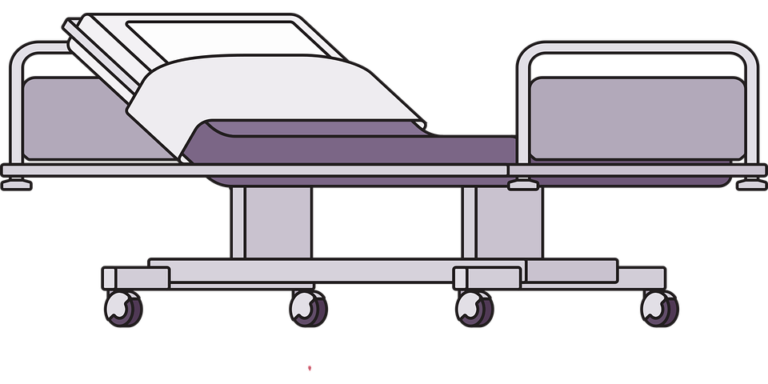Book Appointment Now

Salmon’s Construct for Public Health Nursing
Salmon’s Construct for Public Health Nursing provides a structured approach to addressing complex public health challenges. Developed by Lois W. Salmon in the late 1980s, this model emphasizes using public health nursing to protect and promote community health through strategic prevention interventions. Salmon’s construct is particularly noted for its focus on population-level outcomes and its integration of nursing interventions into broader public health systems (Salmon, 1988). This essay examines Salmon’s model through a unique lens, analyzing its core components, operational strategies, and applications, while contrasting its role with other public health nursing frameworks.
Grab a 100% custom nursing paper aboutSalmon’s construct for public health nursing model tailored to your instructions.
Get Custom Nursing Paper
Foundations of Salmon’s Construct: Bridging Nursing and Public Health Systems
Salmon’s model emerged from the need to align nursing efforts with the objectives of public health. Its theoretical underpinnings are rooted in epidemiology, systems theory, and community health principles. Unlike individual-focused models, Salmon’s Construct views populations as its primary clients, addressing collective health risks and inequities (Stanhope & Lancaster, 2020).
The model identifies three intervention spheres: education, engineering, and enforcement. These spheres represent a continuum of strategies ranging from voluntary behavior change to mandatory policy enforcement. By leveraging these spheres, public health nurses can address both individual behaviors and systemic determinants of health (Green & Kreuter, 2005).
The Three Spheres of Intervention: A Multidimensional Approach
1. Education: Empowering through Knowledge
The education sphere focuses on equipping individuals and communities with the knowledge and skills necessary to adopt healthier behaviors. Educational interventions may include workshops, campaigns, and one-on-one counseling. The ultimate goal is to promote voluntary behavior change through informed decision-making (Salmon, 1988).
Example: A public health nurse might conduct workshops on diabetes prevention, teaching at-risk populations about healthy eating and physical activity.
Challenges: Educational efforts can be limited by socioeconomic barriers, health literacy, and cultural differences, necessitating tailored and accessible messaging (Stanhope & Lancaster, 2020).
2. Engineering: Designing Environments for Health
The engineering sphere emphasizes modifying physical, social, or policy environments to promote health. These changes aim to make healthier choices easier and more accessible for the population (Green & Kreuter, 2005).
Example: Collaborating with urban planners to develop safe walking paths or advocating for grocery stores in food deserts are engineering-focused interventions.
Challenges: Environmental modifications often require significant financial and political investment, which can slow implementation (Stanhope & Lancaster, 2020).
3. Enforcement: Ensuring Compliance through Regulation
The enforcement sphere focuses on implementing policies and regulations to enforce health-promoting behaviors and prevent harmful practices. Enforcement is often used when voluntary behavior change is insufficient to achieve public health goals (Salmon, 1988).
Example: Public health nurses might advocate for mandatory vaccinations or enforce smoking bans in public spaces.
Challenges: Enforcement measures can face resistance, particularly when perceived as infringing on personal freedoms. Effective communication and community engagement are critical to mitigating opposition (Stanhope & Lancaster, 2020).
Integrating Salmon’s Construct into Practice: Building Synergies Across Spheres
Salmon’s model highlights the importance of integrating the three spheres of intervention to achieve comprehensive public health outcomes. By combining education, engineering, and enforcement, public health nurses can address immediate health risks while laying the groundwork for sustained improvements (Green & Kreuter, 2005).
Example of Integration: Reducing Tobacco Use
- Education: Launching campaigns about the risks of smoking and the benefits of cessation.
- Engineering: Increasing access to smoking cessation programs and creating smoke-free zones.
- Enforcement: Advocating for higher taxes on tobacco products and stricter advertising regulations.
This integrated approach not only addresses individual behaviors but also modifies systemic factors that influence smoking prevalence.
Summary of Salmon’s Construct for Public Health Nursing
| Sphere | Focus | Examples of Interventions | Challenges |
|---|---|---|---|
| Education | Voluntary behavior change | Health workshops, public awareness campaigns, counseling | Low health literacy, cultural barriers |
| Engineering | Environmental modifications | Safe walking paths, improved access to healthcare facilities | High financial and political costs |
| Enforcement | Policy and regulation | Vaccination mandates, smoking bans, food safety regulations | Resistance from individuals or groups |
Comparing Salmon’s Construct to Other Public Health Nursing Models
Salmon’s model stands out for its focus on integrating systemic interventions with nursing practice. While other models, such as the Community as Partner Model, emphasize community engagement and assessment, Salmon’s Construct prioritizes actionable strategies for immediate and systemic impact. Similarly, the Epidemiologic Model focuses heavily on disease surveillance, whereas Salmon’s approach incorporates behavioral, environmental, and policy dimensions for a broader scope of impact (Stanhope & Lancaster, 2020).
Applications of Salmon’s Construct in Contemporary Public Health
1. Addressing Vaccine Hesitancy
Vaccine hesitancy, a significant public health challenge, can be effectively addressed using the three spheres of Salmon’s Construct.
- Education: Public health nurses play a critical role in dispelling myths about vaccines. For instance, tailored community sessions can address specific concerns, such as linking vaccine side effects to scientific explanations or highlighting real-world benefits through personal testimonials. In rural or underserved areas, mobile health units can bring these educational initiatives directly to communities with limited access to formal healthcare systems.
- Engineering: Efforts to improve vaccine accessibility include setting up walk-in clinics, drive-through vaccination sites, and outreach programs for remote or hard-to-reach populations. Technology also plays a role, such as using mobile applications to send reminders or scheduling appointments.
- Enforcement: Mandating vaccination for school entry or travel, as well as creating workplace vaccination policies, ensures higher compliance rates. For example, public health authorities might enforce such mandates while addressing concerns by offering exemption policies based on valid medical grounds.
Through this multidimensional approach, vaccination rates improve, public trust is fostered, and herd immunity is strengthened.
2. Combating Obesity in Urban Communities
Obesity, often termed a global epidemic, requires a comprehensive approach that includes behavioral, environmental, and policy-level interventions.
- Education: Public health campaigns focused on dietary awareness and physical activity are foundational. For example, community workshops can teach families how to prepare affordable, healthy meals or educate children on the risks of sugar-sweetened beverages. Schools can incorporate nutrition education into their curricula to reinforce healthy habits from an early age.
- Engineering: Addressing structural barriers, such as food deserts, is critical. Public health nurses can advocate for grocery stores with fresh produce in underserved areas or the establishment of farmers’ markets. Additionally, they can partner with urban planners to design parks, bike paths, and other spaces that encourage physical activity. Initiatives like “healthy corner stores” also incentivize small businesses to stock nutritious food options.
- Enforcement: Enacting regulations that reduce unhealthy food marketing to children or imposing taxes on sugary drinks have proven effective in some regions. Local governments may also implement zoning laws that restrict fast-food establishments near schools and playgrounds.
This synergistic strategy not only addresses the root causes of obesity but also creates sustainable environments conducive to long-term health.
3. Reducing Tobacco Use
Tobacco use remains a leading cause of preventable death worldwide, and Salmon’s Construct provides a holistic strategy for tackling this issue.
- Education: Anti-smoking campaigns focusing on the risks of tobacco use, such as lung cancer and heart disease, are integral. Visual campaigns featuring graphic images or testimonials from former smokers often resonate deeply with target audiences. Health professionals can also educate adolescents on the dangers of vaping and e-cigarettes through school-based interventions.
- Engineering: Public health interventions might include creating more smoke-free public spaces, such as parks and campuses, to limit exposure to secondhand smoke and normalize non-smoking behaviors. Introducing quitline services, mobile apps, or community support groups provides additional support for those trying to quit.
- Enforcement: Strict tobacco regulations, including age restrictions, bans on flavored tobacco products, and significant increases in tobacco taxes, have been successful in reducing smoking rates. For instance, some countries have implemented plain packaging laws to reduce the appeal of tobacco products.
By addressing tobacco use through education, environmental changes, and enforcement, public health initiatives can significantly decrease smoking prevalence and related morbidity.
4. Maternal and Infant Health Improvement
Improving maternal and infant health outcomes, particularly in low-resource settings, aligns seamlessly with Salmon’s Construct.
- Education: Nurses can provide antenatal classes that emphasize proper nutrition, the importance of regular check-ups, and breastfeeding benefits. Tailored education for fathers and extended family members ensures that maternal health becomes a collective responsibility.
- Engineering: Ensuring access to safe birthing centers, improving transportation for expectant mothers, and equipping clinics with adequate medical supplies are essential engineering efforts. Mobile health clinics or telehealth services can also address gaps in care for remote communities.
- Enforcement: Policies mandating folic acid fortification in staple foods or requiring hospitals to adopt baby-friendly practices (e.g., rooming-in policies for mother-infant bonding) reinforce systemic support for maternal and infant health.
The integration of these strategies addresses both individual and systemic barriers, leading to healthier outcomes for mothers and infants.
Salmon’s Construct for Public Health Nursing offers a strategic framework for addressing complex health challenges through a combination of education, engineering, and enforcement. Its focus on population-level interventions and systemic change makes it a valuable tool for public health nurses aiming to promote equity and improve outcomes. By integrating its spheres of intervention, the model ensures a holistic approach that not only addresses immediate health concerns but also creates sustainable pathways for long-term community health (Stanhope & Lancaster, 2020).
Also read:
References
- Salmon, L. W. (1988). The health field concept: A critique. Public Health Nursing, 5(4), 202–206. https://doi.org/10.1111/j.1525-1446.1988.tb00767.x
- Green, L. W., & Kreuter, M. W. (2005). Health Program Planning: An Educational and Ecological Approach (4th ed.). McGraw Hill.
- Stanhope, M., & Lancaster, J. (2020). Public Health Nursing: Population-Centered Health Care in the Community (10th ed.). Elsevier.







